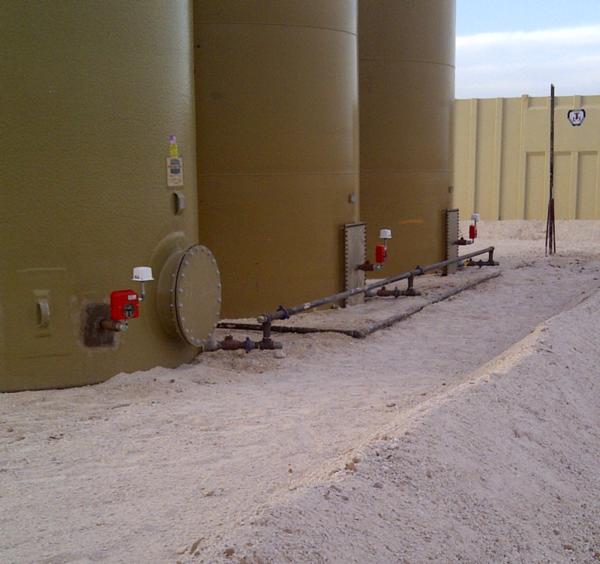Moving from a Wired to a Wireless Remote Monitoring System
Remote monitoring networks provide industries with the capability to automatically track and control various assets to improve operations while reducing costs. Wired remote sensing systems are the norm, especially in the oil and gas industry. In these configurations, sensors monitoring various assets are equipped with outputs that require hundreds of feet of wire to connect to a PLC. Analog 4-20mA current loop and Modbus interfaces are examples of communication protocols that can cope with long cable runs.
However, while offering advantages over taking manual readings from sensors or gauges, wired systems can pose limitations depending on the application regarding installation costs, sensor flexibility, and environmental influences. For example, if a remote monitoring application requires multiple sensors to monitor various parameters, a wired system requires each sensor be wired back to the controller using an interface port. For large systems, a wired system requires a large interface panel with many different interfaces.
A wireless system, on the other hand, will often have a digital communications interface (Modbus RS485), allowing for many sensors to be wirelessly “connected” to the controller through a single port. While beneficial when configuring a new controller, changing from a wired interface (with lots of individual input ports) to a gateway-based wireless system with a digital interface requires pre-planning. In lieu of making a complete changeover to a wired system, SignalFire supplies modules that can convert digital information into individual analog channels, simulating the existing analog interface. Although this is the easiest solution for a quick changeover and does not require any software changes, it does not utilize the vast increase in data and diagnostic benefits that come with changing the complete communications architecture to a wireless sensor control system.
Here are some factors to consider when evaluating a move to a wireless remote monitoring and control system instead of upgrading an existing wired system.
| Wired System | Wireless System | |
|---|---|---|
| Price | What is the area over which the wired system will operate? Costs related to running conduit over large areas, especially if requiring trenching, can make a wired system too cost prohibitive. | With no conduit or trenching requirements, a wireless system can be installed at the cost of a wired system with 50 feet of installed conduit – less if conduit needs to be buried. |
| Maintenance | When removing sensors for periodic maintenance, wires integrating to units can be damaged. Improper wire labeling can result in incorrect sensor replacement. | In a wireless system, nodes integrate to sensors that send data directly to a gateway. When removing sensors for maintenance, the wireless node easily detaches and re-attaches without interference by wires. |
| Environmental | Underground conduit is often ruined by equipment when digging a trench for another underground conduit run. The cost to replace conduit and cable systems can be huge. In addition, lightning strikes on a sensor will propagate along all wires, often destroying equipment attached to the system. | With no underground wires, nothing must be dug when going wireless. Once installed, lighting strikes to a sensor may damage the single unit, but not interfere with the complete system. |
| Topography | Certain locations make it impractical to run wires, such as across a highway or river. | A wireless node can be easily installed on the other side of a highway or river. Self-configuring, wireless nodes automatically connect to the network. |
When moving from a wired solution to a wireless one, consider all the aspects of the job. Is there a problem with what you have now? If so, are you willing to change the interface at the controller understanding that this change will allow you to take in much more data and diagnostic information than you had before? Is it more cost effective when considering the absence of cable, trenching and interface requirements? Deciding when to “pull the trigger” is the hardest part. SignalFire has found its customers benefit in the long term with a wireless system.
Find out why a chemical plant chose a wireless remote monitoring system over a wired system when adding level and temperature parameters to its tank level monitoring application by downloading the application note: Wireless Remote Monitoring and Control System Offers Cost-Effective Solution for Tank Level Monitoring.
0 Comments
Leave a reply
You must be logged in to post a comment.





